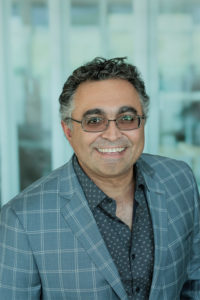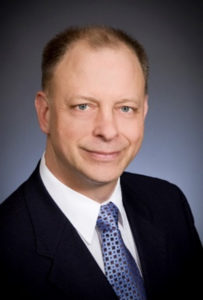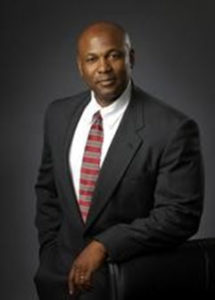As the modern world becomes increasingly complex, so does engineering project management. Between constantly changing technologies, cost concerns, and untimely design changes, projects that do not have a broad view might just end in disaster.

As systems engineering Assistant Professor Kamran Shahroudi and two Ph.D. candidates proved recently in their award-winning papers, without a consistent culture of systems thinking throughout a project serious fiascos could occur.
“A systems culture comes first, then systems thinking, then systems engineering. One without the other doesn’t work,” said Shahroudi. “Having fantastic tools at our disposal doesn’t really help if you don’t have the culture and philosophy that’s behind it.”
A consistent culture of systems methodology
Shahroudi pointed to the famous failure of the baggage handling system at Denver International Airport in the early 1990s as an example of where a culture of systems thinking, integrated throughout a project, could have helped avoid a fiasco.
At the time, the state-of-the-art baggage system was supposed to revolutionize baggage handling at the airport. Instead, the failed system caused a 16-month delay in the new airport’s opening and added $560 million to the final price tag. The remaining system was finally abandoned in 2005, after 10 years of implementation in only a single terminal.
The project failed for many reasons, some of which Shahroudi said might have been avoided had a systems culture been in place. He said the fiasco was in part caused by program managers, baggage system developers, and airline stakeholders being completely separated.
“We already know that this lack of integration leads to a lot of problems,” said Shahroudi. “But when it comes to how you could actually improve it there’s not much information out there.”
Implementing a systems way of thinking
To avoid costly fiascos like the baggage handling system, Raymond Jonkers, a systems engineering Ph.D. candidate, and Shahroudi co-authored a paper on how to integrate a culture of systems thinking from the very start of a project. Their paper, detailing how adopting systems thinking early in the design process would reduce costly engineering changes, won a best paper award at the 2019 IEEE International Systems Conference.

In the paper, Jonkers worked with Shahroudi, also his Ph.D. advisor, on integrating the management of engineering design changes and knowledge early in a project, through an analyzation of a shipyard design team. Over the length of any project, costs increase and changes become harder to make. Sharing information across teams and stakeholders from the beginning, particularly with the dashboards and other tools that Jonkers and Shahroudi proposed, would help avoid lengthy delays and cost overruns later in the project.
With little more than abstract systems project management research available, the paper is a first step toward practical implementation of systems thinking across projects. Jonkers will now get feedback from systems process experts and create simulations, moving closer to a real-world process.
“If you wanted to integrate changes naturally and avoid expensive bills later, this is how you might go about it,” said Shahroudi. “Ray will try it, show a lot of experts, and then it’s out there.”
Systems engineering for practical solutions
When it comes to monitoring forests for wildfires, putting a culture of systems thinking into play is not only about research, it helps to find solutions to complex practical problems.
Setrige Crawford, Sr., a systems engineering Ph.D. candidate, and Shahroudi co-authored a paper that won an INCOSE Insight Outstanding Article Award on cost-effective, autonomous wildfire detection. The study requires broad systems thinking and culture throughout, to find the best solutions across multiple disciplines.
Crawford’s research involves using unmanned aerial vehicles to detect wildfires autonomously, long before the incidents become disasters. Each drone would use various technologies to determine any threats in the predetermined area. Using lasers, photogrammetry, or any other particular technology to find wildfires from a drone is an important technological challenge.

But Crawford’s research takes a much more thorough look at the entire system. Any plan for a fleet of drones has to be cost effective for a small community, who also may not have personnel with the expertise to launch drones or decipher the data. The drone itself, flying barely above the trees in the forest, must be designed in a way that if it crashes it does not cause even more wildfires.
Shahroudi, also Crawford’s Ph.D. advisor, said that effective systems design must integrate technologically diverse solutions and keep economic viability in mind. By working through the analysis of model-based systems engineering, simulations and verifications, and technological considerations, the paper sets the stage for a safe, reliable, and affordable solution that helps communities fight wildfires before they reach disaster levels.
Industry and academia, theory and practice
The two papers highlight how practical needs in industry can promote use and refinement of academic theories. After decades of experience working in engineering, Crawford and Jonkers returned to academics in systems engineering. By its nature, the program is one where they could work on academic theories and immediately apply them to the real world.
“I learned this expression,” Shahroudi joked, “that in theory, theory and practice are the same, but in practice they are different!”
Shahroudi recounted being attracted to an exciting engineering theory from another researcher, supposedly applicable to real solutions. When he tried to apply it, it was completely impractical and would not work.
He said that is where systems engineering really comes into focus. Bringing in a more holistic approach, and a culture of systems thinking, leads to better solutions.
“We love to come in here and think about how to solve these problems for the future,” said Shahroudi. “We don’t see these real-world, complex problems as being resolved yet.”